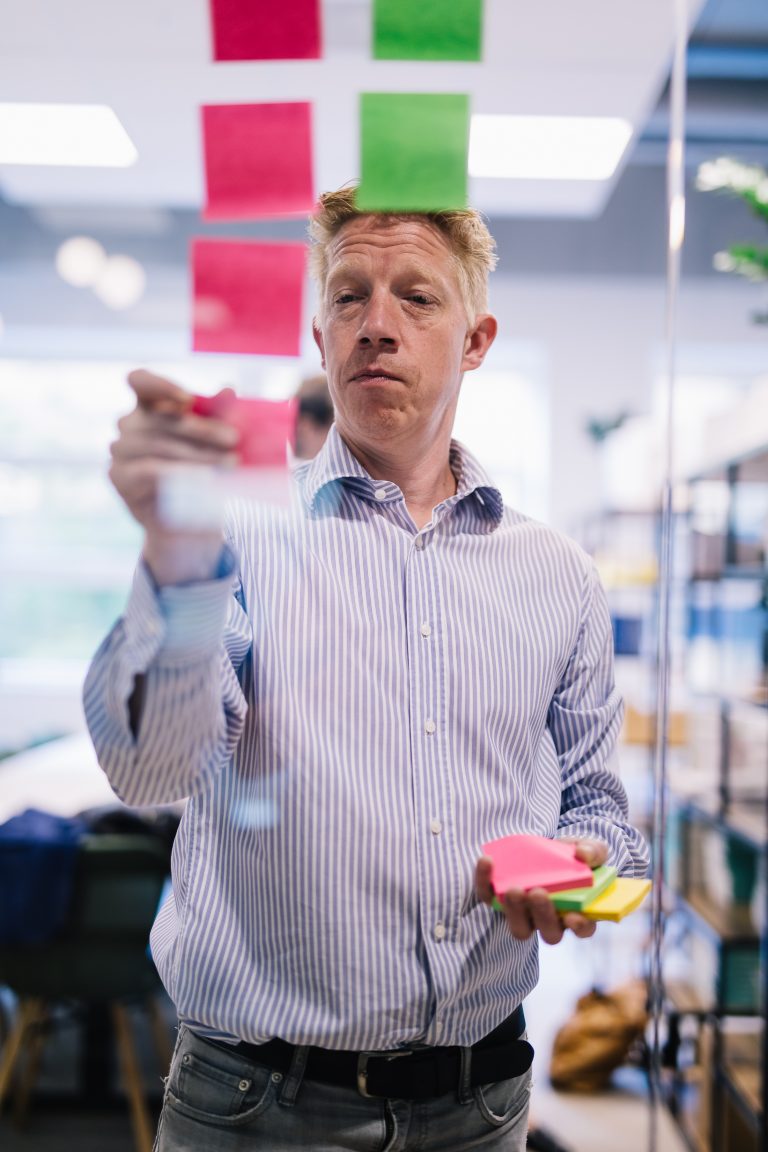More and more often, employees follow a Lean training because they feel as if it is a necessity and not because their organisation thinks so. It is possible they see tons of possibilities to improve ongoing processes, but they do not know how. And if your organisation is not yet familiar with Lean, where do you start?
Keep it simple
Although it may not seem like it, a working environment is surrounded with problems, shaped as waste. These are activities that take up time and money, but do not add value to the product or service which the customer receives.
Most likely, these types of problems are put on hold, because finding a solution to them can be considered complex. This is most frequently due to hierarchical structures within an organisation. And that is the main reason why it is important to cut up such “big” problems into smaller pieces, so these can be solved step by step. Furthermore, this can be considered to be the first step towards continuous improvement.
Create a foundation
Problems can be everywhere, in every shape or form with many different types of seriousness or priority. In other words, every problem is different from the previous one. The most important concept regarding problems is being transparent and open to your employees, so a foundation open for change is created. To do so, an improvement board might be a great solution. This is where employees themselves are able to write down problems, which will then be discussed at the start of the day or the week (on Monday). This way, employees are encouraged to think about the problems in their own working environment and come up with possible solutions.
Where to start?
It can be difficult to think of the right place to start Lean yourself. However, it is important to keep in mind the workplace is a great place to start. Apply 5S to arrange your workplace more efficiently. One big advantage is how easy to understand 5S is and how fast the result can be visible. It also increases how much your employees are involved in processes within your organisation.
What about the management?
In a very approachable manner, you have shown your colleagues the tip of the iceberg that is called Lean. If they are nearly as enthusiastic as you are, Lean will spread itself. To be fair, starting with Lean is much easier than keeping Lean going. Because how do you keep improving? This is where management is unmissable. They are meant to realise Lean is a strategy for improvement, which is how it should be treated.
Because the philosophy is not a project, solution or short-term replacement: it is a way of thinking, handling and improving where continuous improvement is very important. It is not something you can achieve within a week, but it takes up much more time and energy. The management should commit to the principles of Lean and be able to keep up with the development it brings along. Only when they do so, Lean can be embraced by the entire organisation.
Commitment of the management
The management is meant to choose Lean experts as support. When implementing Lean, employees take on the central role and are encouraged to improve the working environment. Because they are, in fact, experts when it comes to the business processes of an organisation. They know like no other where improvement could be made. The management is responsible, though, for making sure these employees have time to actually make the improvements.
Lean is a philosophy that focuses on customer value by creating a collective mission for employees and management. Shortly, it comprises looking for continuous improvements within business processes by eliminating waste for the customer.
And initiating Lean top-down or bottom-up does not necessarily matter: you need both of these approaches to fully embrace the Lean culture within your organisation and gain success in the long run.




